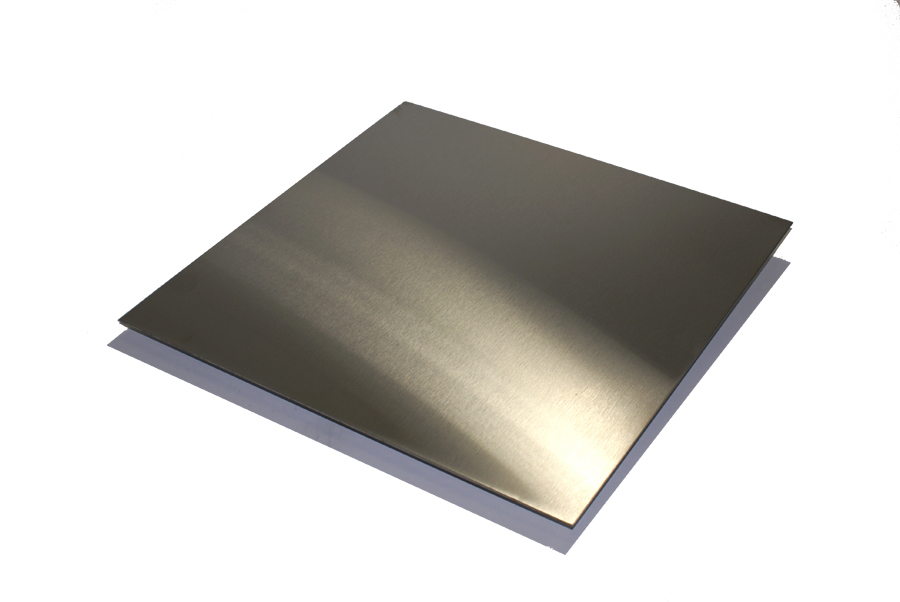| ASTM Designation | EN Designation |
|---|---|
| 304 | 1.4301 |
| S30400 | X5CrNi18-10 |
Designation:
ASTM (American Society for Testing and Materials) assigns the 304 designation to this stainless steel grade. 304 stainless steel is widely used and known for its good corrosion resistance, strength, and ease of fabrication.
EN (European Norm) assigns the designation 1.4301 to this stainless steel. It is the European equivalent of ASTM 304 and provides identical or nearly identical properties.
Chemical/Standard Names:
S30400: This is the Unified Numbering System (UNS) designation for 304 stainless steel, used for consistent identification across standards and industries.
X5CrNi18-10: This is the European material designation under EN standards:
- X: Stainless steel.
- 5: ~0.05% carbon content.
- CrNi18-10: Approximately 18% chromium and 10% nickel content.
Chemical Composition
| C | Si | Mn | P | S | Cr | Ni |
|---|---|---|---|---|---|---|
| ≤ 0.070 | ≤ 0.75 | ≤ 2.00 | ≤ 0.040 | ≤ 0.015 | 17.50 – 19.00 | 8.00 – 10.00 |
Elements and Their Roles
- C (Carbon) ≤ 0.070%
Carbon increases strength and hardness but can reduce corrosion resistance if present in higher amounts. A low carbon content helps prevent sensitization, which can lead to intergranular corrosion.
- Si (Silicon) ≤ 0.75%
Silicon improves oxidation resistance and enhances the alloy’s strength at high temperatures. It also aids in the deoxidation process during steel manufacturing.
- Mn (Manganese) ≤ 2.00%
Manganese improves tensile strength and hardness. It also contributes to the alloy’s toughness and assists in deoxidation during the steelmaking process.
- P (Phosphorus) ≤ 0.040%
Phosphorus improves machinability and strength, but excessive amounts can decrease ductility and increase brittleness. Its presence is carefully controlled.
- S (Sulfur) ≤ 0.015%
Sulfur improves machinability but is kept low because higher amounts can reduce corrosion resistance and toughness, particularly in applications requiring high durability.
- Cr (Chromium) 17.50–19.00%
Chromium is the key element that gives stainless steel its corrosion resistance by forming a passive chromium oxide layer on the surface. The range of 17.50–19.00% ensures strong resistance to oxidation and rust.
- Ni (Nickel) 8.00–10.00%
Nickel enhances corrosion resistance, especially in acidic or chloride-containing environments. It also improves the alloy’s toughness and ductility, making it more formable.
Corrosion Resistance
This data demonstrates that 304 Stainless Steel is a versatile and corrosion-resistant material, making it ideal for use in environments that require durability against chemical exposure or food-safe applications
304 Stainless Steel exhibits corrosion rates resistance lower than 0.004 in/year in the following media:
- 20% acetic acid at 176o
- 90% formic acid at 68o
- 20% phosphoric acid at 140o
- 20% nitric acid at 122o
- 90% sulphuric acid at 68o
- Toluene
- Milk
- Beer
- Juice
- Wine
Pitting Corrosion
304 Stainless Steel is successfully used in media where chloride concentration does not exceed 200 ppm. Chlorides (such as those in salt or seawater) are common causes of pitting corrosion in stainless steel. It is a critical factor when selecting materials for environments exposed to salty or chloride-containing conditions.
200 ppm is considered a moderate level of chlorides, which means:
- The material is suitable for mildly corrosive environments.
- It may not be ideal for highly salty environments, like marine applications or areas with de-icing salts.
Specifications
304 Stainless Steel is approved in compliance with: PED DGRL 97/23/EG according to EN 10028-7 and AD 2000 Merkblatt W2 and W10.
PED (Pressure Equipment Directive) DGRL 97/23/EG:
- The Pressure Equipment Directive (PED) is a European Union regulation that sets safety standards for the design, manufacturing, and testing of pressure equipment.
- Compliance with DGRL 97/23/EG (the earlier version of the PED directive, now replaced by 2014/68/EU) means the material is certified for use in pressure vessels, boilers, and related equipment where safety is critical.
EN 10028-7:
- This is a European standard that specifies technical delivery conditions for stainless steels used in pressure equipment. 304 Stainless Steel meets the mechanical and chemical properties outlined in this standard, ensuring its suitability for pressure environments.
AD 2000 Merkblatt W2 and W10:
- AD 2000: German set of technical rules used in designing and fabricating pressure equipment.
- W2: Specifies requirements for materials in pressure vessels, particularly those exposed to temperatures where corrosion or stress resistance is critical.
- W10: Focuses on materials that can withstand low temperatures, ensuring toughness and performance in cryogenic or cold conditions.
What This Means for 304 Stainless Steel:
- Safety
It is certified as safe and reliable for use in pressure equipment.
- Versatility
Suitable for various industries, including chemical, food processing, and energy, where pressure and temperature performance are critical.
- Regulatory Compliance
Can be used in equipment sold in the EU and Germany, adhering to their strict safety and quality standards.
This makes 304 Stainless Steel a trusted material for demanding applications requiring compliance with international safety and quality standards.
Resources and References: ASTM International | Northern American Steel | Stainless Supply

